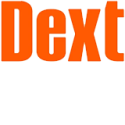Mid-year financial check-in for individuals
By: Jay Parks

As we move into the second half of the year, it's crucial for business owners to take a strategic pause. While often quieter operationally, the summer season offers a valuable window to evaluate your company's financial health, sharpen your goals, and ensure you're set up for a strong finish.
A mid-year check-in isn't about overhauling your business. It's about making smart, timely adjustments based on where you are now—and where you want to be by year-end.
Take a close look at your budget versus actual performance
Start with the basics. How does your actual revenue and expense activity compare to your budget or forecast from the beginning of the year? Are there areas where you're outperforming expectations—or falling short?
Understanding these variances isn't just a bookkeeping task. It helps you make better decisions for the second half of the year, whether it's reallocating resources, adjusting pricing, or scaling up marketing efforts in your most profitable channels.
Update your forecasts for the rest of the year
With six months of data behind you, now's the time to revise projections for Q3 and Q4. A refined forecast helps you prepare for hiring, inventory needs, cash flow demands, and year-end tax planning opportunities.
Remember: good forecasts are living tools. Use what you've learned this year to sharpen your expectations and stay agile in changing market dynamics.
Review your depreciation and asset purchases
If you're considering equipment purchases or capital investments, it's essential to factor in bonus depreciation rules. These are continuing to phase out—dropping to 40% this year and 20% in 2026—so mid-year is a smart time to plan.
Purchases made in the second half of the year may still qualify for significant write-offs, but timing and strategy are key. Talk to your advisor about what makes the most sense based on your current earnings and tax bracket.
Reevaluate insurance and risk coverage
Insurance is one of those things that's easy to forget until you need it. Mid-year is a great time to reexamine your business coverage: liability, property, cyber, workers' comp, and key person policies.
If you've expanded, downsized, added locations, or launched new services, your policy may no longer reflect your current risk profile. Adjusting now can help you avoid surprises later.
Schedule your tax and strategy review
By August, you've likely completed two quarters of estimated tax payments. Before Q3 wraps up, meet with your CPA to assess how your income and expenses align with expectations. This can help prevent underpayments—or identify opportunities to reduce what you'll owe at year-end.
You might also revisit broader strategic questions: Are your goals still aligned with where your business is heading? Is now the time to reinvest, streamline, or take on new challenges?
A thoughtful mid-year check-in doesn't just help you react to what's happened—it empowers you to lead more intentionally into what's ahead. The better you understand your financial picture today, the more confident and strategic you'll be tomorrow.



